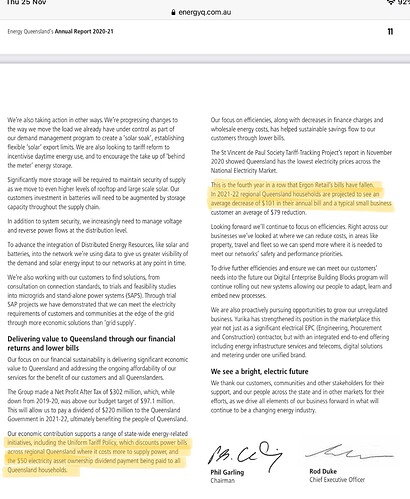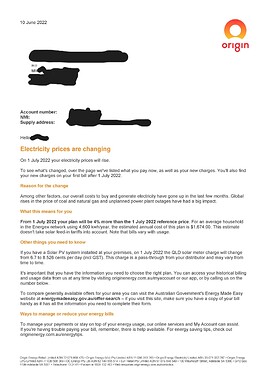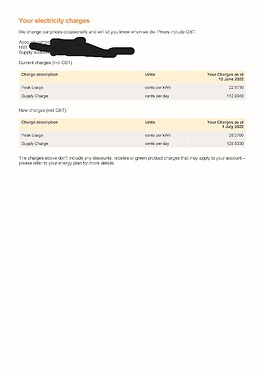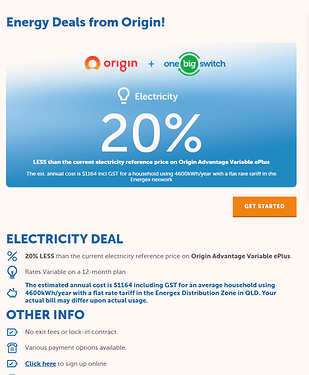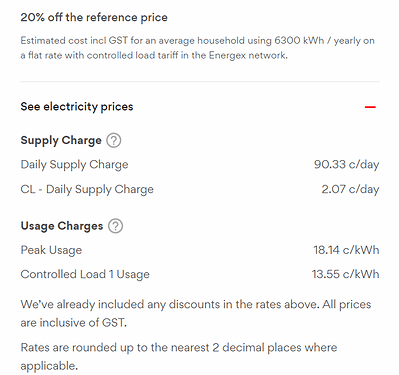Energex recently replaced my water meter, guess it’s for these changes/tracking?
Though consistently when I got to electricity prices in SE QLD, Energex is always the lowest for me.
I got this email 2 days ago
Electricity prices are changing
On 1 July 2022 your electricity prices will rise.
To see what’s changed, over the page we’ve listed what you pay now, as well as your new charges. You’ll also find your new charges on your first bill after 1 July 2022.
Reason for the change
Among other factors, our overall costs to buy and generate electricity have gone up in the last few months. Global rises in the price of coal and natural gas and unplanned power plant outages have had a big impact.
What this means for you
From 1 July 2022 your plan will be 7% off the 1 July 2022 reference price. For an average household in the Energex network using 6,300 kwh/year, the estimated annual cost of this plan is $1,831.00. Note that bills vary with usage.
Other things you need to know
If you have a Solar PV system installed at your premises, on 1 July 2022 the QLD solar meter charge will change from 6.7 to 8.526 cents per day (incl GST). This charge is a pass-through from your distributor and may vary from time to time.
It’s important that you have the information you need to choose the right plan. You can access your historical billing and usage data from us at any time by visiting originenergy.com.au/myaccount or our app, or by calling us on the number below.
To compare generally available offers for your area you can visit the Australian Government’s Energy Made Easy website at energymadeeasy.gov.au/offer-search – if you visit this site, make sure you have a copy of your bill handy as it has all the information you need to complete their form.
Ways to manage or reduce your energy bills
To manage your payments or stay on top of your energy usage, our online services and My Account can assist. If you’re having trouble paying your bill, remember, there is help available. For energy saving tips, check out originenergy.com.au/energytips
my changes according to Origin
Current charges (incl GST):
Charge description Units Your Charges as at 10 June 2022
Peak Usage cents per kWh 20.6310 T31-Night Rate(Super Economy) cents per kWh 15.4060 Supply Charge cents per day 102.7430 Supply Charge Controlled Load cents per day 2.3550
New charges (incl GST):
Charge description Units Your Charges as at 1 July 2022
Peak Usage cents per kWh 23.7300 T31-Night Rate(Super Economy) cents per kWh 18.1790 Supply Charge cents per day 118.1490 Supply Charge Controlled Load cents per day 2.7730
Usually I make/renew my Energex/Origin electricity contracts via One Big Switch - current offer is for 20% off
With One Big Switch 20% off will be from July 1, 2022
